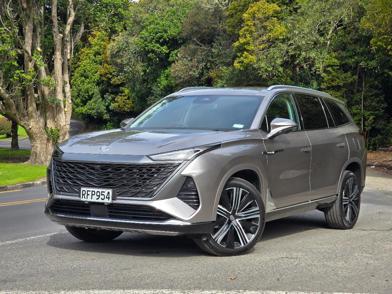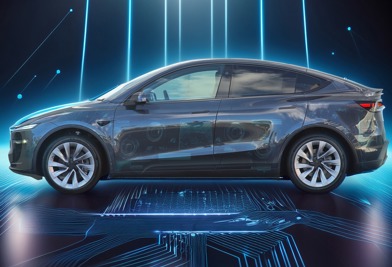All the Ford Escape electrification-attention is on the FHEV (full hybrid electric vehicle); the non-plug-in one. It’s the new thing… and also the thing that seems most in tune with current Kiwi tastes.
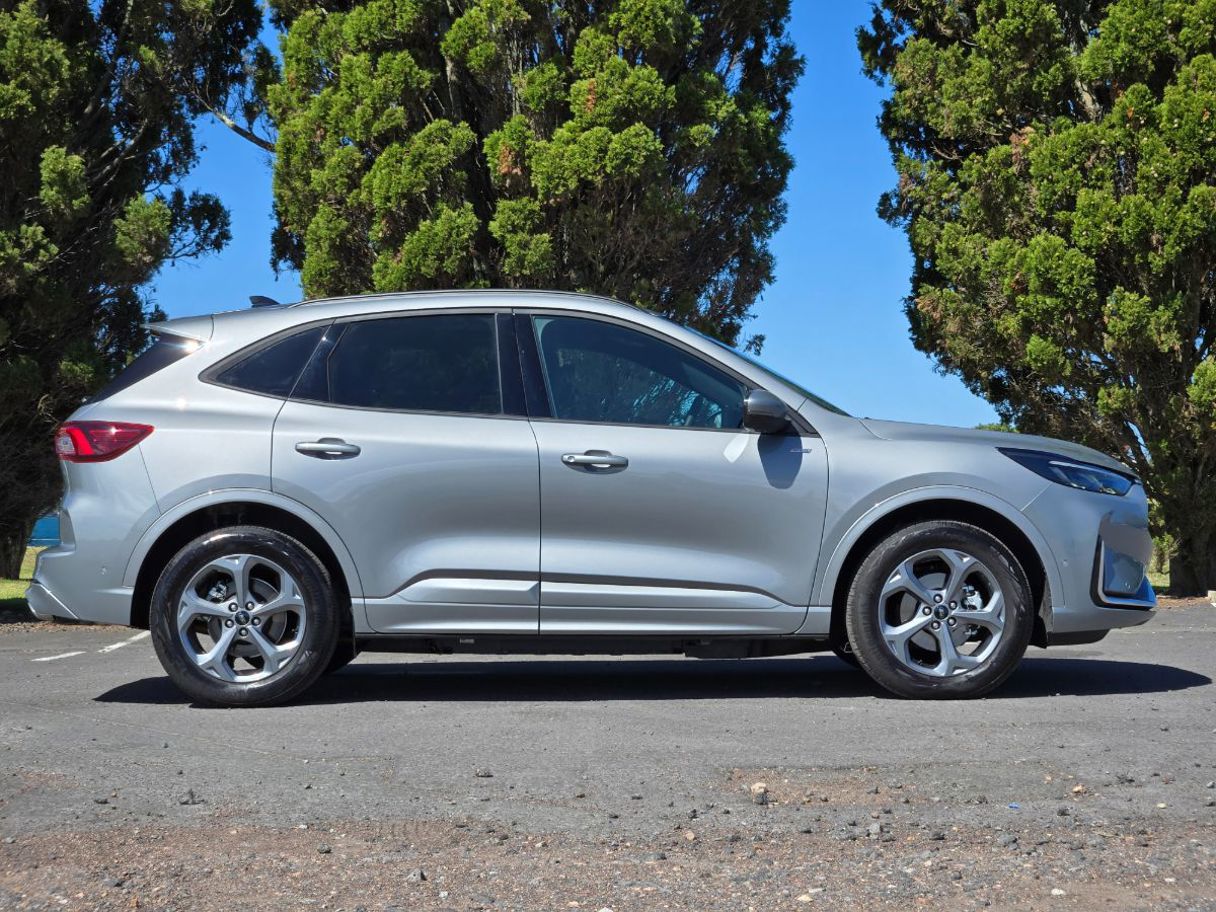
FORD ESCAPE ST-LINE X PHEV: Powertrain 2.5-litre petrol four-cylinder with 14.4kWh plug-in battery and electric motor, eCVT, FWD Output 178kW Efficiency 0.8l/100km, EV range 60km (3P-WLTP) Size 4614mm long, 1859kg Price $72,990.
But don’t forget Ford has offered a plug-in hybrid electric vehicle (PHEV) version of the Escape in New Zealand since 2020, updated along with the rest of the range for 2025.
So now we have both, and remembering PHEV-tech gives you proper pure-electric commuting ability without compromising on the long-range hybrid driving aspect, it’s all fuel for thought about which Escape might suit you best.
In some respects it’s an easy comparison between the car here and the Escape FHEV we’ve also reviewed (click here to read that), because they come in exactly the same ST-Line X specification: excellent and quite sporty seats upholstered in something grippy called Sensico, great infotainment through a 13-inch screen with B&O audio, 360-degree camera… the works. It helps justify a high price for the FHEV, although the PHEV is more expensive still: up $6500 to $72,990.
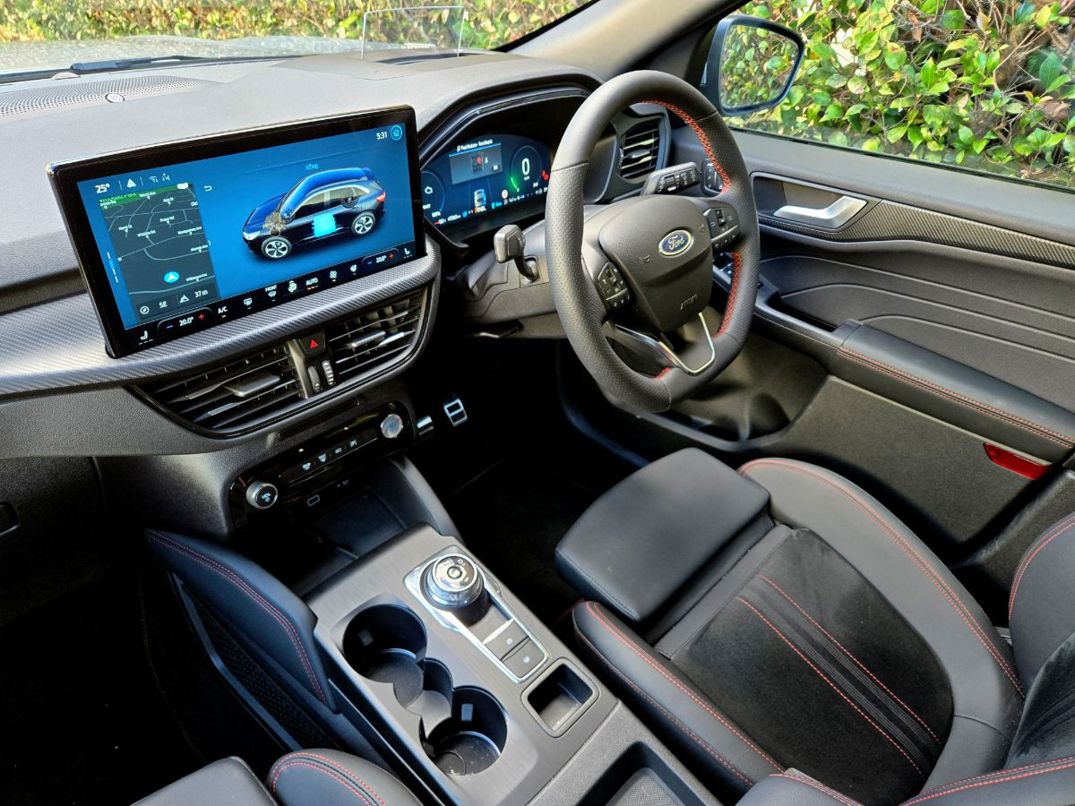
The PHEV has been upgraded to match the 2.1-tonne tow rating for the FHEV too, so that’s a tick for many Kiwi buyers.
The Escape is great in electric mode, allowing you to use maximum throttle without automatically starting up the petrol engine to assist.
From there, the two part ways. Same 2.5-litre engine, but the 14.4kWh battery gives the PHEV a claimed 60km EV range (it’s more like 50km real-world), which helps explain the official fuel consumption figure of 0.8l/100km.
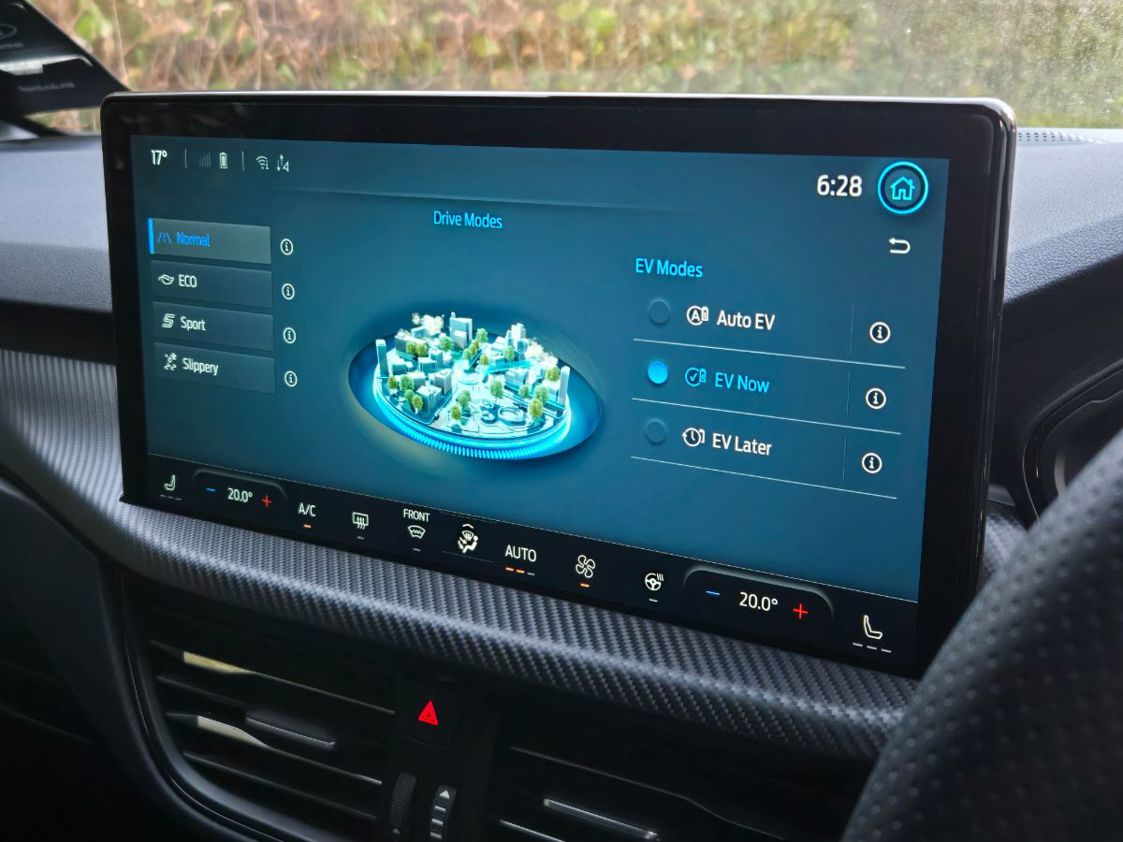
As with any PHEV, you can match the official figure if you have an average commute and charge every night, but it all really depends on how you use the vehicle. And don’t forget the Road User Charges of $38/1000km for PHEVs.
It’s an easy comparison between the car here and the Escape FHEV we’ve also reviewed, because they come in exactly the same ST-Line X specification.
The Escape is great in electric mode, allowing you to use maximum throttle without automatically starting up the petrol engine to assist; instead, you get a prompt asking if you’d like some help from internal-combustion, which can be activated with one touch of a steering wheel button.
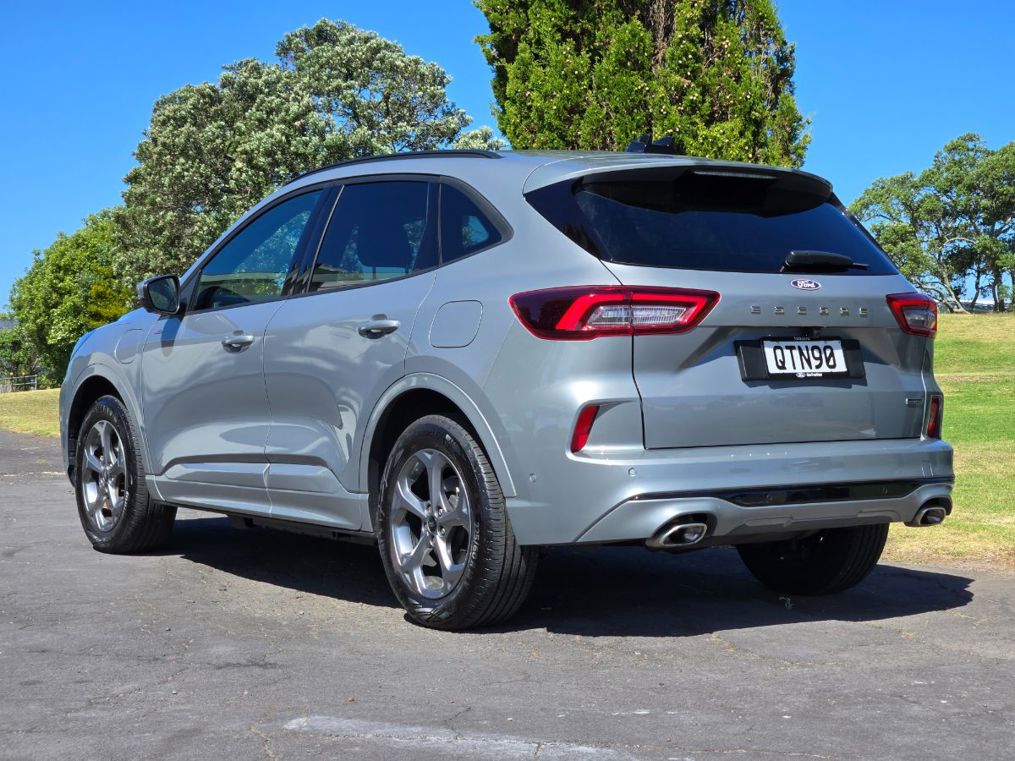
Lots of modes to play too, including four for the overall car and three specifically for the electrified powertrain, allowing you to prioritise EV power, save it for later or let the car do the thinking.
For reasons known only to Ford, the Escape plug-in hybrid is only available as a FWD, while you can have the normal hybrid in AWD.
It all works well, although it must be said that the battery size is very modest by 2025 standards; it’s practical enough for Kiwi commuting and the smooth hybrid operation counts for a lot, but we’re a bit surprised Ford didn’t take advantage of the update to sneak a few more kWh into the package and extend that EV range.
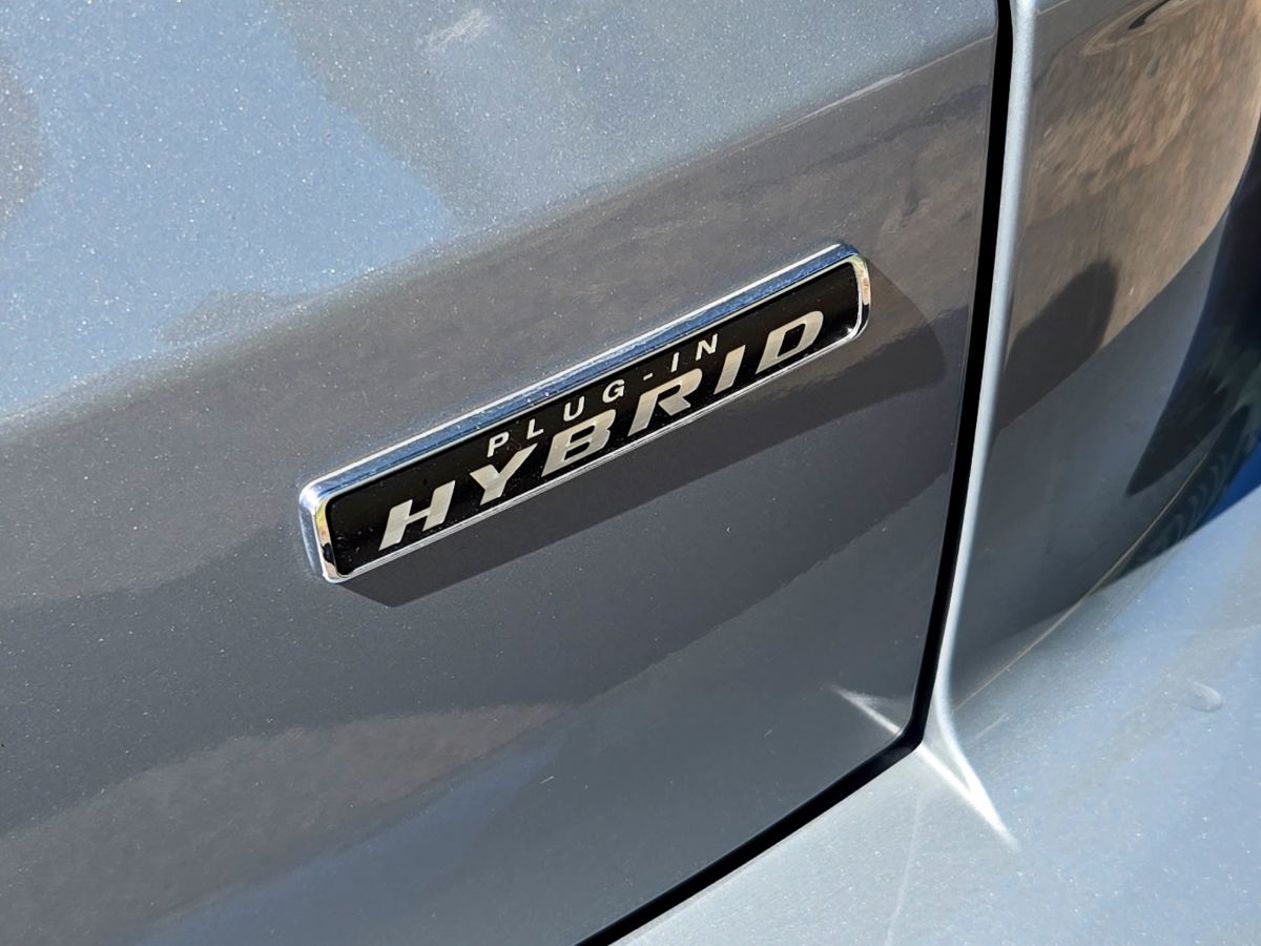
The PHEV is substantially more powerful than the FHEV, adding 44kW to make 178kW combined. It’s around a second quicker to 100km/h, at 7.3 seconds.
But it’s not as smooth getting there, because for reasons known only to Ford the plug-in is only available as a FWD. So it’s not as capable around corners or as versatile on loose/slippery surfaces as its non-plug-in sibling. Deploy full power in anything other than a straight line and you’ll get chirpy front tyres, too.
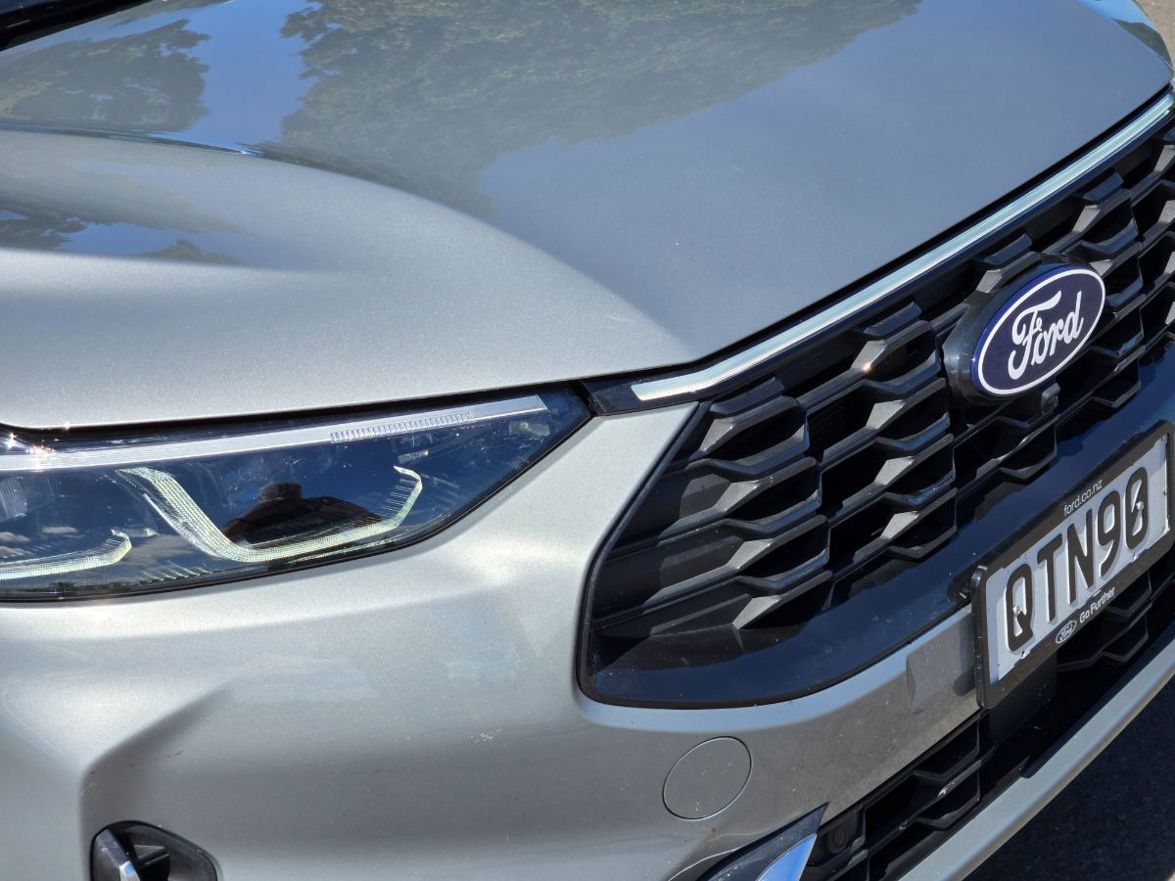
It’s still an enjoyable car to drive by family SUV standards, true to Ford form; but it’s fair to say the PHEV is a bit softer than the FHEV, given it’s carrying extra weight (only a little, 89kg) and rides on smaller 18-inch alloys, compared to the FHEV’s sparkly 20-inch rims. But that makes sense for a model more suited to urban driving.
It’s horses for courses naturally, which is why we have the choice. But if PHEV technology ticks the right boxes for you, the Escape is a good one, providing foot-flat EV running and smooth transitions between electric and hybrid power.
If you can’t be bothered with regular AC charging or don’t have access to it, the FHEV still has the ability to deliver astonishingly good fuel economy, and you’re actually getting a better – if slower – drive.
What are the key statistics for the Ford Escape ST-Line X PHEV?
All hybrid Escapes use a 2.5-litre Atkinson cycle inline four-cylinder petrol engine. But the PHEV adds a plug-in battery pack and more powerful electric motor to make 178kW, so it's substantially more grunty than the non-plug-in "full hybrid", which makes 134kW.
Is the Ford Escape ST-Line X PHEV efficient?
The official claim of 0.8l/100km seems surreal, but remember the fuel consumption of PHEVs depends entirely on how often you charge it and how you drive it. If you're charging every night and your return commute is less than 60km, you might do even better!
Is the Ford Escape ST-Line X PHEV good to drive?
It's ultra-refined and the smooth way the PHEV runs in electric and transitions between EV and hybrid power is really impressive: it's a feelgood family machine. The Escape generally handles well too, although the PHEV is probably the least agile because it's the heaviest and a bit softer than the equivalent FHEV model.
Is the Ford Escape ST-Line X PHEV practical?
It's really spacious for a mid-size SUV, and those sporty Sensico seats do add a touch of comfort for those up front. Weirdly, the FWD Escapes (of which this is one) have 40l less bootspace than the AWD, but 517l is still generous.
What do we like about the Ford Escape ST-Line X PHEV?
It's beautifully smooth regardless of which powertrain mode you're in, and it switches between them unobtrusively. We like the way it stays in EV mode when asked, and will pop up a prompt if it thinks you might benefit from some petrol power (but it's still up to you).
There are some nice detail touches in the cabin that give the ST-Line X a premium feel.
What don’t we like about the Ford Escape ST-Line X PHEV?
Ford's inability to make the PHEV an AWD is a disappointment (just another motor, surely?) and the 50-60km EV range, while fine for most city commuting, is pretty modest by 2025 standards.
What kind of person would the Ford Escape ST-Line X PHEV suit?
Somebody who's already decided the Escape is the right medium SUV for them and/or places a high priority on the zero-emissions electric aspect.











